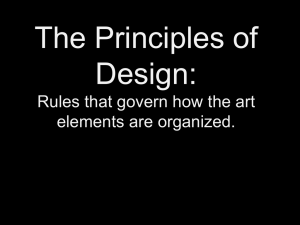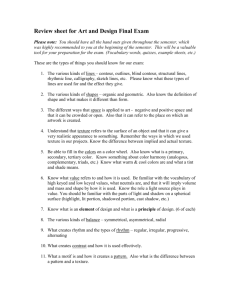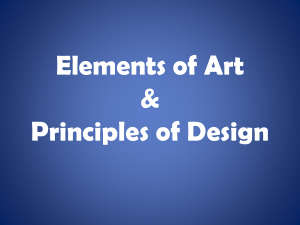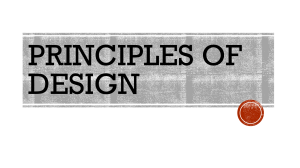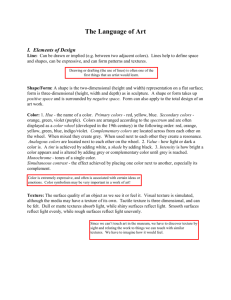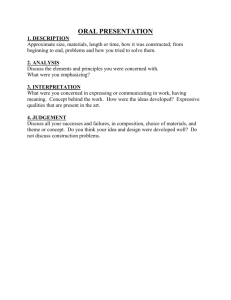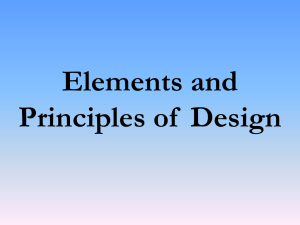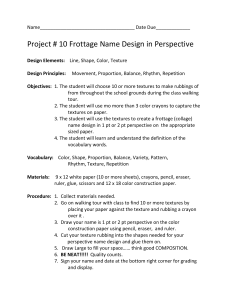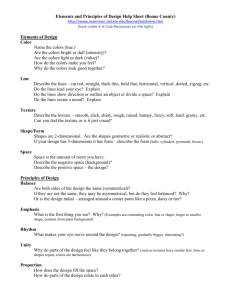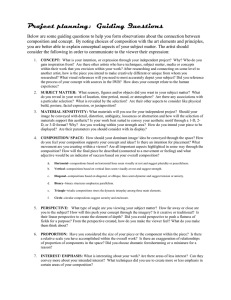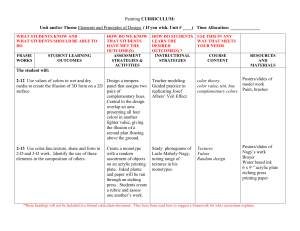Elements and Principles of Art: A Visual Guide
advertisement
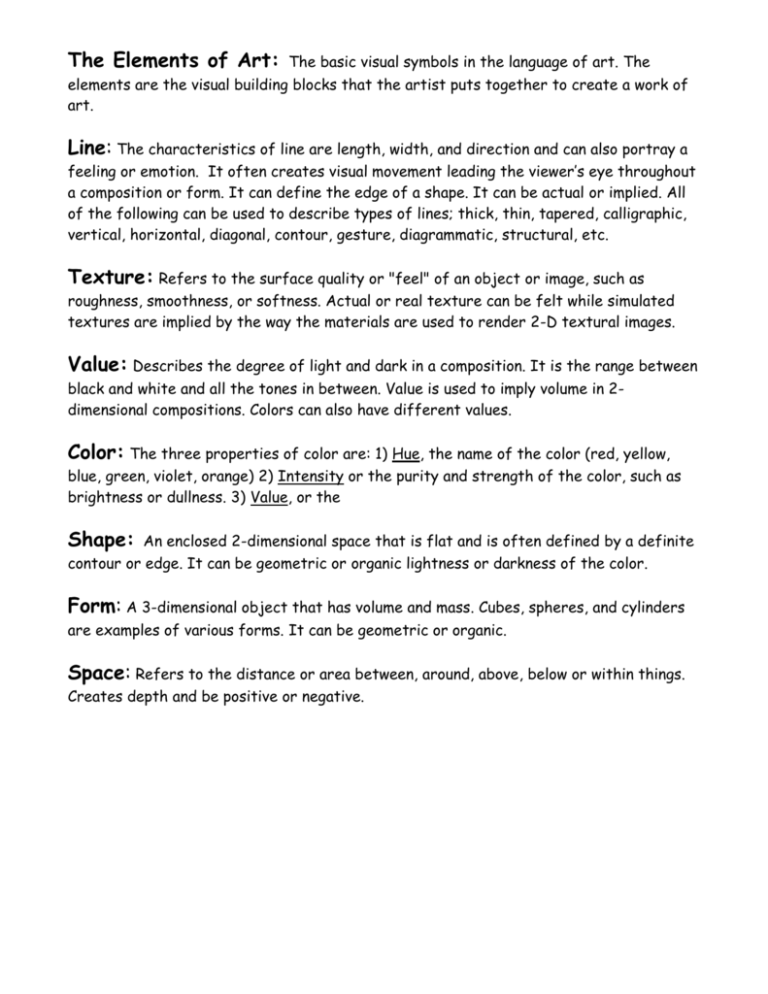
The Elements of Art: The basic visual symbols in the language of art. The elements are the visual building blocks that the artist puts together to create a work of art. Line: The characteristics of line are length, width, and direction and can also portray a feeling or emotion. It often creates visual movement leading the viewer’s eye throughout a composition or form. It can define the edge of a shape. It can be actual or implied. All of the following can be used to describe types of lines; thick, thin, tapered, calligraphic, vertical, horizontal, diagonal, contour, gesture, diagrammatic, structural, etc. Texture: Refers to the surface quality or "feel" of an object or image, such as roughness, smoothness, or softness. Actual or real texture can be felt while simulated textures are implied by the way the materials are used to render 2-D textural images. Value: Describes the degree of light and dark in a composition. It is the range between black and white and all the tones in between. Value is used to imply volume in 2dimensional compositions. Colors can also have different values. Color: The three properties of color are: 1) Hue, the name of the color (red, yellow, blue, green, violet, orange) 2) Intensity or the purity and strength of the color, such as brightness or dullness. 3) Value, or the Shape: An enclosed 2-dimensional space that is flat and is often defined by a definite contour or edge. It can be geometric or organic lightness or darkness of the color. Form: A 3-dimensional object that has volume and mass. Cubes, spheres, and cylinders are examples of various forms. It can be geometric or organic. Space: Refers to the distance or area between, around, above, below or within things. Creates depth and be positive or negative. Principles of Art: The rules that govern how artists organize the art elements for specific effects Balance: A sense of stability in the body of work. Balance can be created by creating a feeling of equal weight. There are three kinds: symmetrical, asymmetrical, and radial. Emphasis: Developing points of interest or focus to pull the viewer's eye to important parts of the work so they stand out. Also called focal point. Contrast: Combining very different elements next to one another like, rough and smooth, yellow and purple, light and dark. Contrast adds excitement, drama, and interest. Variety: Using many different elements in a work such as different shapes, textures, colors and values to create interest. Repetition: The act of using elements over and over again in a regular or planned way to create a visual rhythm. Pattern: The result of repeating lines, colors or shapes over and over and over in a planned way. Often referred to as a design or motif. Movement: Adds excitement to your work by showing action and directing the viewer’s eye throughout the work. Rhythm: Repeating elements to create a kind of beat through reoccurring pattern and movement. Used to describe a continuous and repeated pace in music as well as art. Proportion: The relationship of the size or scale of objects or forms to one another in a work of art. Scale: Refers to changing the size of objects or forms without distorting its original proportions. Unity and Harmony: When all the parts come together to equal a whole. The work does not appear disjointed or confusing. It gives an uncomplicated look to the work. When the elements and principles are effectively used together to create a sense of wholeness or oneness, unity is achieved.
